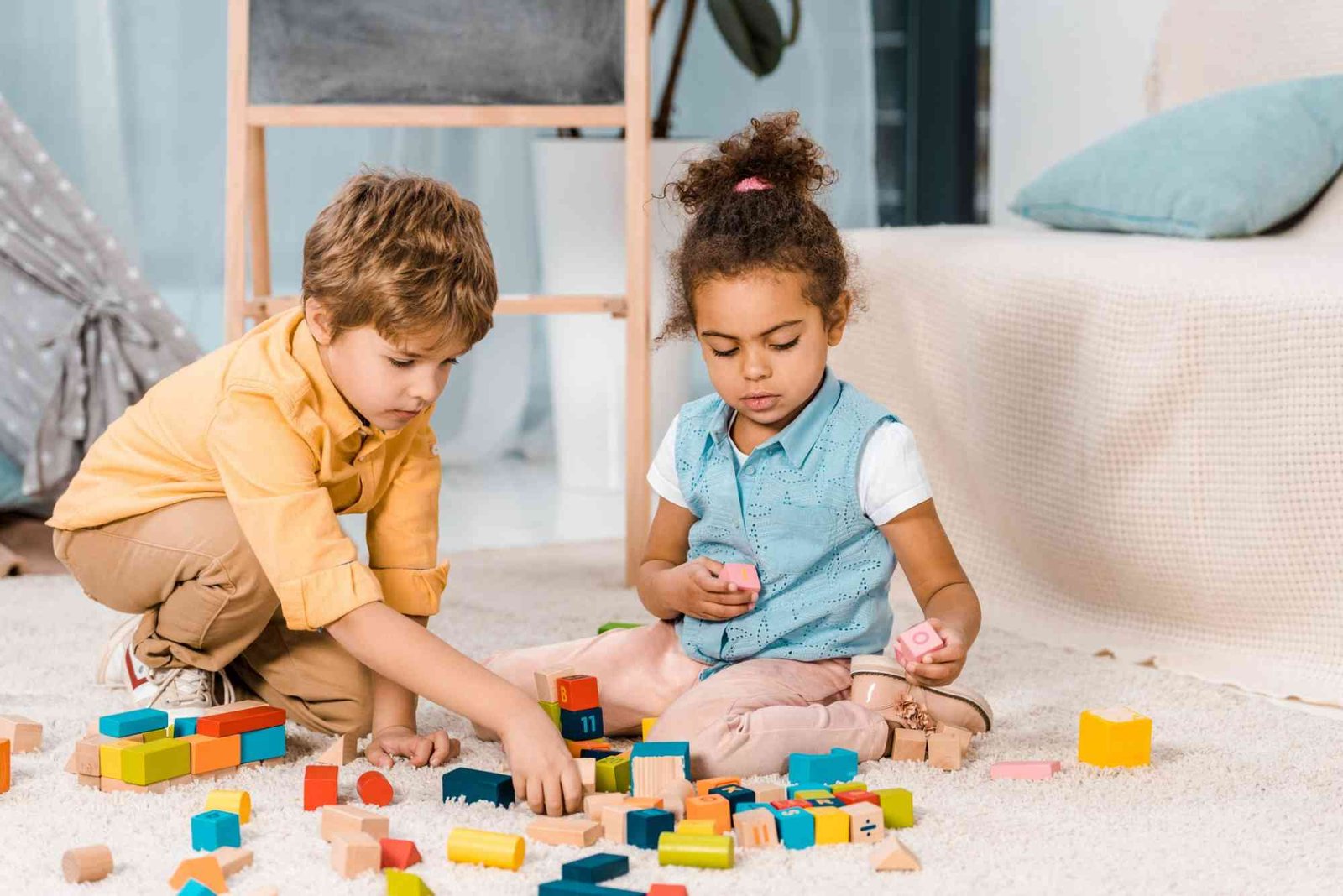Introduction
Playing is more than just fun — it’s an expression of creativity, learning, and imagination. Whether you are playing alone, with friends, or even in a group setting, the way you play reflects your unique personality and mindset. The concept of “Creative Ideas to Are for Playing” highlights how individuals can transform ordinary playtime into something extraordinary, engaging, and fulfilling. This article explores unique ideas and strategies that make playtime not only enjoyable but also mentally and emotionally enriching.
The Essence of Play and Creativity
Playing is a universal activity that transcends age, culture, and language. It’s how children learn about the world and how adults relieve stress. Creativity brings an extra spark to play — turning simple actions into powerful experiences. The combination of creativity and play builds imagination, encourages collaboration, and boosts emotional well-being.
For instance, when children invent stories while playing with toys, they’re not just having fun; they’re developing cognitive skills, empathy, and problem-solving abilities. Adults, on the other hand, can use creative play through board games, art-based activities, or interactive storytelling to escape daily stress and recharge mentally.
How Creative Play Shapes Imagination
Imagination is the foundation of creativity. When we talk about “Creative Ideas to Are for Playing,” we’re referring to the process of rethinking how games, activities, or playful moments can inspire new ideas. A simple activity like drawing can become a storytelling exercise, and a group game can turn into a lesson in teamwork and leadership.
Creativity during play develops critical thinking and emotional intelligence. It allows people to explore endless possibilities, helping them break free from the monotony of structured routines. The best part is that you don’t need fancy tools or expensive equipment — just an open mind and a willingness to try something new.
Turning Playtime into an Art of Discovery
Creative play transforms ordinary fun into meaningful exploration. Whether it’s children experimenting with different roles in make-believe games or adults engaging in team-building exercises, play serves as a bridge between reality and imagination. The secret lies in exploring new perspectives and questioning traditional forms of play.
For example, if you’re used to playing video games, try switching to a creative game-building platform where you can design your own levels or characters. If you enjoy outdoor activities, you can introduce storytelling elements into sports, such as creating a narrative where each player represents a mythical character. These small changes make playtime much more engaging and memorable.
Creative Ideas to Are for Playing at Home
Playing creatively doesn’t require going out or spending money. You can create fun, imaginative experiences right at home. Simple activities like indoor scavenger hunts, DIY crafts, or homemade role-playing games are excellent examples.
You can even transform household chores into playful challenges. For instance, children can race to see who cleans their room fastest or adults can turn cooking into a creative competition by experimenting with new recipes. The key is to approach every task with curiosity and joy.
When family members participate together, these activities become bonding moments filled with laughter and learning. Play at home is not only a source of entertainment but also a reminder that creativity thrives in simplicity.
Outdoor Play: Connecting with Nature
Outdoor play offers a refreshing escape from digital screens and confined spaces. Nature itself is a vast playground full of inspiration and creative potential. Imagine turning a walk in the park into a nature scavenger hunt, a storytelling session, or even a mini art project using leaves, stones, and twigs.
For children, outdoor play nurtures curiosity and observational skills. For adults, it acts as a therapeutic escape, helping them reconnect with the natural world. Outdoor creative play can also include building simple obstacle courses, organizing themed picnics, or creating imaginative photo challenges.
When creativity meets nature, the result is a deeply enriching experience that strengthens both body and mind.
Group Play: Building Bonds through Creativity
Playing together is one of the best ways to strengthen relationships. Group play fosters communication, teamwork, and empathy. When creativity enters the mix, the experience becomes more dynamic and enjoyable.
You can introduce games that require problem-solving or artistic collaboration. Activities like charades, group storytelling, or cooperative building games challenge everyone to think differently while having fun. Group creative play also encourages inclusivity — everyone contributes their unique ideas, making each session memorable.
In professional settings, creative group play can boost morale and spark innovation. Companies often organize team-building events using games and challenges to improve communication and cooperation among employees.
Digital Creativity: Redefining Modern Play
In today’s digital age, creativity has found a new platform — the virtual world. Video games, VR experiences, and online collaborative platforms provide exciting opportunities for creative play. However, balance is essential. The goal should be to use technology as a tool for imagination, not a replacement for real-world interaction.
Many online games encourage creative problem-solving and design thinking. Platforms that allow users to create characters, worlds, or entire stories help expand creative skills. Moreover, sharing digital creations with others online promotes a sense of community and collaboration.
The fusion of digital innovation and traditional creativity opens endless possibilities for modern play.
Learning through Creative Play
One of the most remarkable benefits of play is its ability to teach. Creative play integrates fun and learning seamlessly, helping people absorb knowledge naturally. When learning feels like play, motivation and engagement increase significantly.
Children learn language, mathematics, and social skills through imaginative games. Adults can enhance creativity, emotional intelligence, and strategic thinking through playful activities such as puzzles, art workshops, and simulation games.
Schools and educational institutions worldwide are increasingly incorporating play-based learning because it develops essential life skills like curiosity, communication, and adaptability.
Creativity Beyond Childhood: Why Adults Need to Play Too
Play is not just for children — adults need it just as much. Many people mistakenly believe that play loses importance with age, but research proves the opposite. Engaging in creative play helps adults reduce stress, improve relationships, and stimulate innovative thinking.
Playing music, painting, role-playing, or even participating in escape room challenges can reignite the creative spirit. It encourages spontaneity and emotional freedom — qualities that are often suppressed in structured adult life.
When adults embrace creative play, they rediscover the joy of living fully in the moment, something that often gets lost in the hustle of daily life.
Inspiration from Movies and Stories
Movies have long been a source of creative inspiration for play. Whether you’re reenacting favorite scenes or designing games based on your favorite characters, films encourage imagination and creative expression. You can explore What Movies Are to get ideas about storytelling and creative interpretation in play.
Similarly, themed play sessions inspired by popular films — such as superhero games, fantasy quests, or historical reenactments — can transform any environment into a cinematic adventure. To explore more about how Movies Are Playing a vital role in inspiring creativity, you can find interactive resources online.
For additional insights, visit Related resource: movies are playing for engaging examples of how cinematic ideas influence playful creativity.
Benefits of Creative Ideas to Are for Playing
Creative play goes beyond entertainment. It offers numerous psychological, emotional, and cognitive benefits:
-
Boosts creativity and imagination — encouraging innovative thinking.
-
Improves problem-solving skills — by introducing flexible thinking patterns.
-
Enhances emotional well-being — reducing stress and anxiety.
-
Strengthens relationships — by fostering cooperation and empathy.
-
Encourages self-expression — through art, storytelling, and movement.
These benefits highlight the importance of incorporating creativity into all forms of play, regardless of age or environment.
Unlocking the Joy of Creative Play
“Creative Ideas to Are for Playing” isn’t just a concept — it’s a mindset. When you approach play with imagination and curiosity, every activity becomes meaningful. From storytelling and digital design to outdoor adventures and family games, creative play connects you to your inner child and opens doors to endless joy.
Start experimenting with different forms of play today — blend art, nature, and imagination to create unique experiences. Let every playful moment remind you that creativity is not a skill to master but a joy to live.
Explore new ways to play creatively! Whether you’re a parent, teacher, or professional, take the time to rediscover the fun side of creativity. Let play guide you to inspiration, connection, and happiness.
FAQs
What are the best creative ideas for playing at home?
You can create storytelling games, DIY crafts, scavenger hunts, or cooking challenges. These activities make playtime fun and meaningful.
How does creative play help in learning?
Creative play encourages problem-solving, teamwork, and emotional intelligence. It helps learners understand concepts through imagination and interaction.
Can adults benefit from creative play?
Absolutely. Creative play reduces stress, enhances creativity, and improves social connections among adults.
What are some outdoor creative play ideas?
Nature scavenger hunts, art in the park, and storytelling walks are excellent ways to combine creativity with outdoor exploration.
Why is imagination important in play?
Imagination turns ordinary play into extraordinary experiences, allowing people to express themselves and develop critical thinking skills




